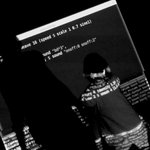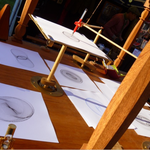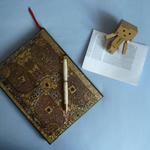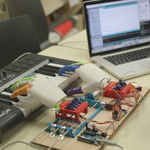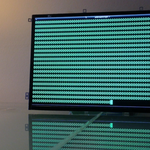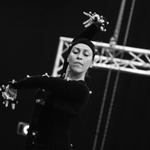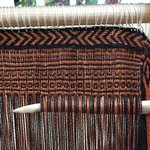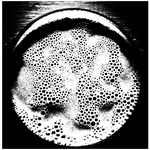
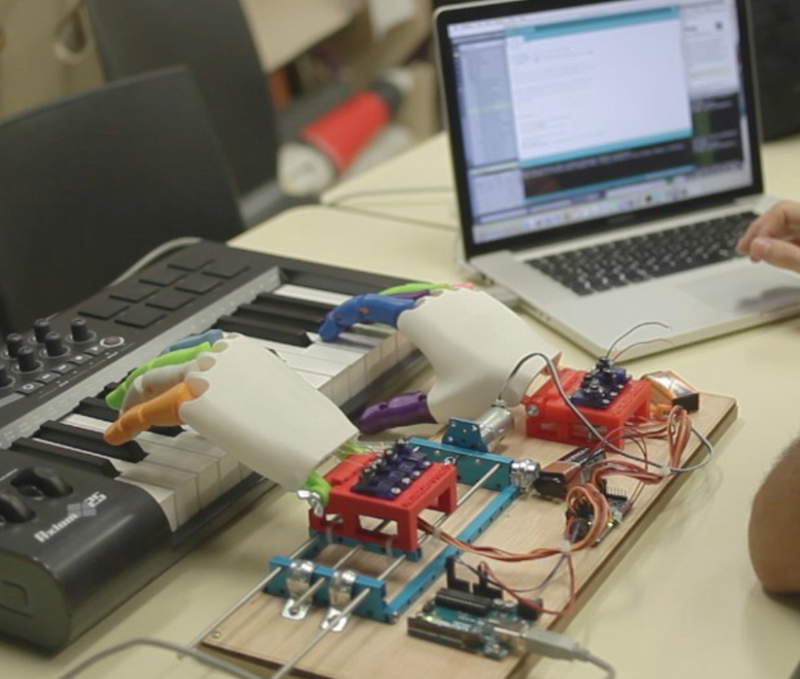
Jesús Jara López (Madrid, 1981) studied computer science in Madrid fnishing in 2007. In 2011 he moved to Germany to learn the language and access the University. He fnished a BA degree on computer music by 2015. His fnal project focused on procedural audio technics for videogames with Unity and Pure Data.
After he ended studies he moved to Madrid where he began working at Medialab- Prado to develop a research called “open technologies for sound and music” where he explores electronic music education with open-source technologies. As a result of this research, and among other activities, he shaped a learning community of livecoding that explores different technologies and platforms and refex about how to make electronic music with algorithmic tools such programs instead of traditional electronic instruments like synthesizers.
He has also collaborated on festivals like Punto de Encuentro (Madrid, 2015), In-Sonora (Madrid, 2016) or Explora (Bilbao, 2016) where he has performed and run workshops. Nowadays he works on the collaborative production of the piece “Expansion of the Universe” from Rudolf Wakolbinger, with the fnancial support of the Austrian Culturforum in Madrid and also on the creation of educational resources to teach electronic music.
Medialab-Prado is a citizen laboratory of production, research and broadcasting of cultural projects that explores the forms of experimentation and collaborative learning that has emerged from digital networks. Nowadays Medialab-Prado hosts a number of research projects that focus on music technology, digital fabrication or creative coding among others. One of those projects is called Autofabricantes.
Autofabricantes is a learning community that looks actively for the new theoretical and technical developments in the feld of open-source collaborative (auto)fabrication of prosthesis. This project aims for a more ethical alternative to the actual prosthesis industry by applying digital fabrication, open-source technologies and extended learning to the creation of a fully-functional myoelectric 3D-printed hand.
The main target of Autofabricantes are kids. The fact that kids grow up relative fast makes senseless to provide them with an expensive professional prosthesis, while a more toy-wise, cheap, colorful and ideally self-designed hand (in some cases with quite fantasy) is a lot more appealing and interesting for them and fnancially lighter for their families.
From the interaction of Autofabricantes with my own research oriented to electronic music education with computer programming and following this approach described before we came up with the idea of designing a robotic hand which kids with functional diversity could use to play music with.
The piano appear to us like the best instrument to begin with, but far from the idea of replicating a pianist's hand by means of some cutting-edge robotic tool nor focusing on developing a new instrument for a new sort of music, the main purpose would be to use technology to make music education (the one based on traditional instruments) interesting and accessible for these kids. That is why we took Liberace as the model for the hand itself to look up. He was a virtuoso pianist: funny, free and colorful.
In order to accomplish this, we have used one of the old designs of the hand, the one with the right size for the piano and ready to be connected to servomotors. Then we added the following technical improvements:
Modify the material of fnger joints to avoid grip and help key-pressing.
Attachment of servomotors on the fnger to provide automated movement.
Use of an Arduino to control the fnger movements from SuperCollider.
Use of a motor-shield for an easier control of many servomotors.
Attachment of the hand on a mechanic slider to provide changing of scales.
Next improvements would go in this direction:
Better motors and a better system for fnger movement as nylon strips.
Use of a motor driver to control the slider for a precise calibration on piano keys.
An improved design that use the thumb also to key-pressing and not only to grip.
A software tool that helps translate musical notation into gesture movement,
ideally by live coding.
An arts-research day symposium, with talks and performances on the theme of Algorithmic and Mechanical Movement, chaired by Thor Magnusson and Chris Kiefer from University of Sussex's Experimental Music Technology Lab, and taking place in the Sheffield Institute of Arts.
The £25 / £12.50 ticket prices are inclusive of all fees, and includes refreshments, lunch and free access to evening performances at the Millennium Gallery.
We are very happy to announce that the symposium will include a keynote speech by Godfried-Willem Raes from the Logos Foundation. For details, including a draft programme, please see the symposium website hosted by the symposium chairs.

